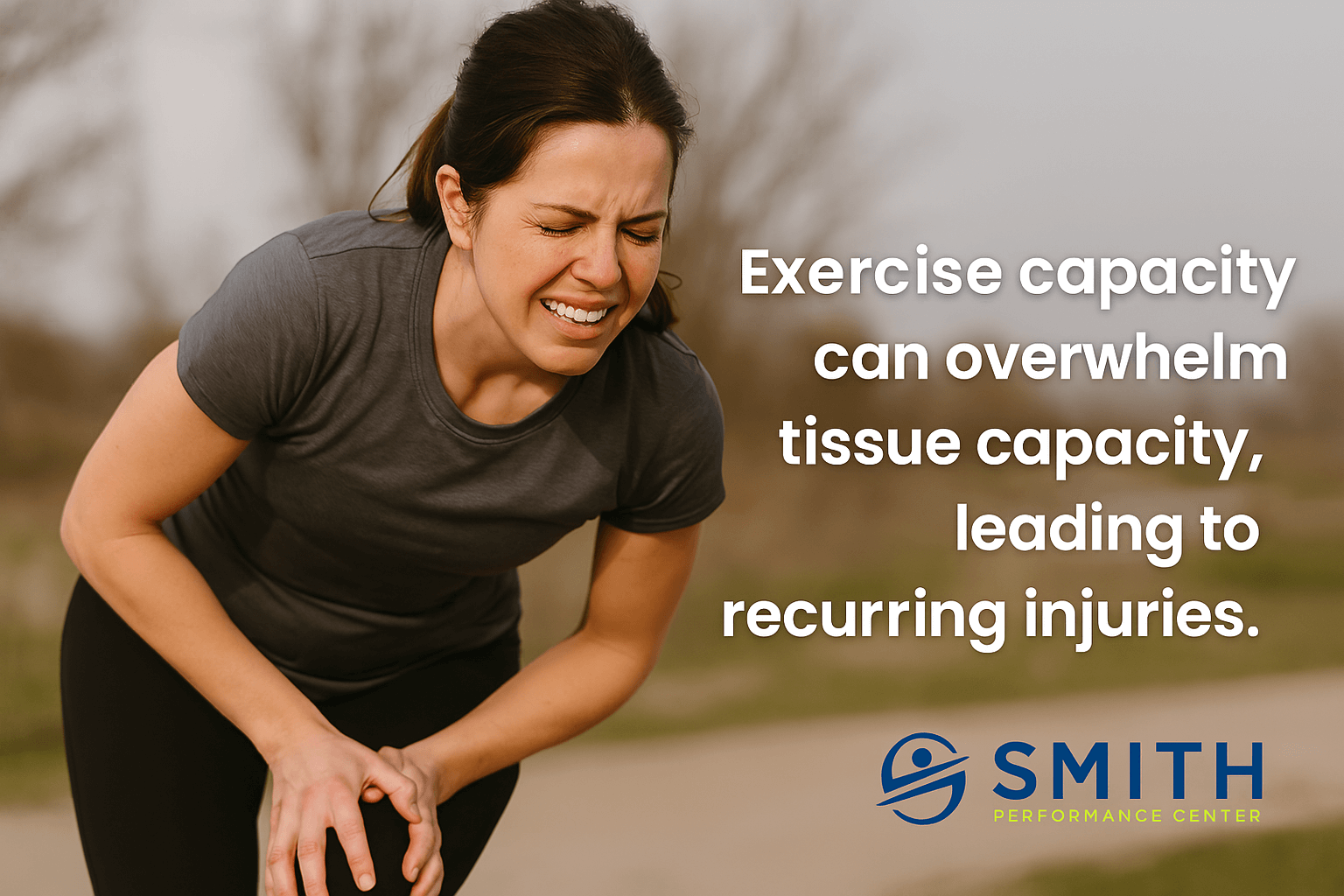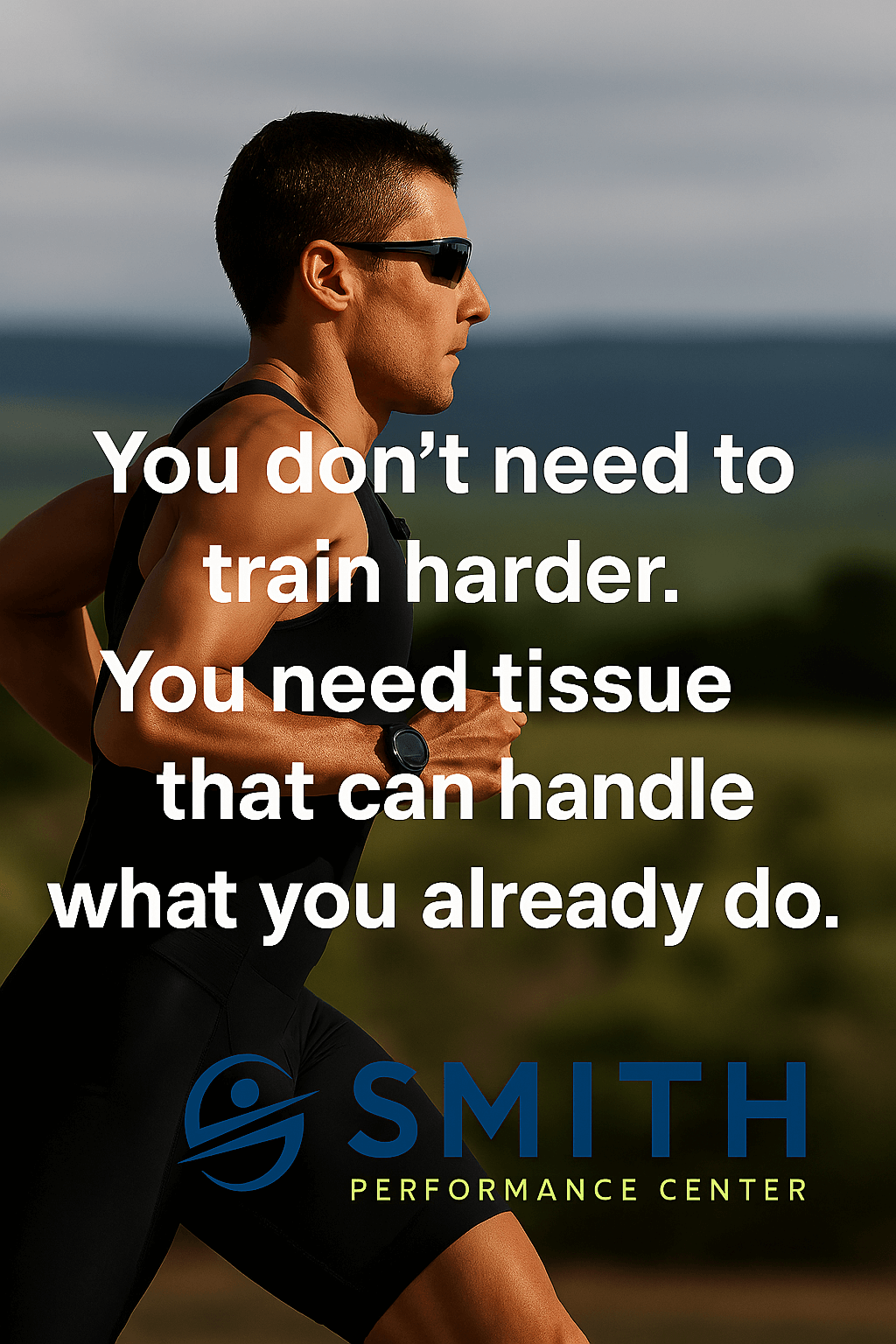The rehab standard is simple; the limit to your exercise is not how hard you can work out, but rather working as hard as possible without going past your tissue capacity.
Our team sees violation of the rehab standard as the most frequent cause of failure during activity progression. A client will feel great and start to progress their workouts. There is no symptoms during the exercise and often no symptoms the same day, but the next day they feel horrible.
We know that in activity progression, you need to understand the type of tissue that is healing, the specific exercise, and volume. We also need to consider the type of injury: chronic, recurrent, and acute.
Chronic Injury
For chronic, we mean is has been present for a long time.
When you have a chronic injury or chronic pain, there are two issues: your exercise capacity is lower because it has been hard to exercise and your tissue capacity is also lower and less than your exercise capacity. Since this issue has been around for a long time, you may have completely stopped exercising and reduced your overall activity. When you tried to start again, you felt like a truck ran you over. The starting point needs to be where you have no increase in pain and no muscle soreness.
This can be very, very low.
Do not judge yourself. Instead, find the edge of activity that does not cause pain. The idea is to do the least amount possible and build up from there when you have success. The tricky part is that the lower exercise capacity and the lower tissue capacity means that it is easy to irritate the tissue, it is easy to cause delayed onset muscle soreness, or do both at the same time, which is a particularly brutal experience.
Recurrent Injury
When you have a recurrent injury, you have likely built up compensations and tools to manage your reduced tissue capacity.
When the reduced tissue capacity is exposed, the injury you seem to be managing well gets exposed. Often you can ignore it by skipping activity, but the problem is still there. The answer is to regress to the point that your weakest link is being challenged appropriately, then move forward together. This issue of skipping exercises is one of the key reasons we use 6 functional exercises in all programs.
These movements will happen in life and our clients need to be able to do them all.
Imagine you irritate your lower back easily and it has been going on for years.
You find that every time you load up your deadlift, your back seems to get hurt even when the weight feels light. All the other exercises feel great. Loading the deadlift must focus on the tissue capacity, which is considerably lower than what you feel capable of doing. The progression is driven by what your tissue handles without a bad response. This may mean you use a lumbar brace when lifting even at low loads. The extra stiffness may help.
We do not skip it, we just load it less or use a different exercise that hits the same muscles like a trap bar deadlift, pull-through, or barbell bridges.
Acute (New) Injury
Acute injuries need to be attacked.
By attacked, we mean that only the activities that trigger the tissue need to be stopped. All other activities should continue. The focus is to get a diagnosis and achieve symptom stabilization fast. Once the symptoms are stabilized, we start on activity progression. The most common orthopedic advice will say to just stop the activity that is hurting you. But we find this leads to other issues like new injuries when you go back to your activity. When coming back from a new injury that you have never experienced before, the most important idea is to monitor for feedback loops and if the activity does not cause the problem, then do not stop.
Do you have any pain with exercise or activity? Can you modify it to something else without losing the value of the exercise?
Do you have delayed pain? Is there an interaction between the activity and sustained position such as sitting or standing?
Do not ignore your feedback loops but don’t be afraid of the injury either.
This is one of the reasons we use artificial stabilization tools. If a brace or tape makes the activity pain free, then use it and ramp right back up to your old training load. Activity progression will actually focus on a gradual reduction in the use of artificial stabilization.







